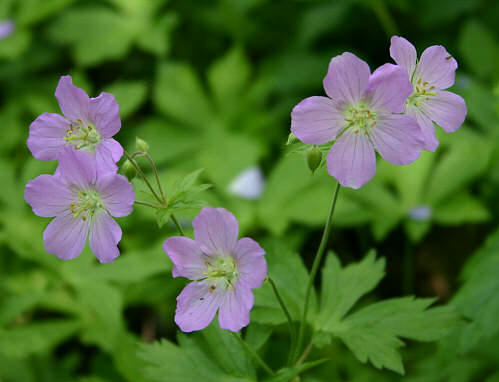After a cold winter, spring has finally arrived, and it is time to plant the garden. One of the most popular annual plants, especially for Mother's Day, is the geranium. It decorates our flower beds and front porches and can be purchased at any type of store, ranging from small local nurseries to big box chains. In fact, the National Garden Bureau
proclaimed both 1998 and 2012 as the year of the geranium.
However, it may be surprising to many that these common, easily-recognizable plants we call geraniums actually belong, not to the geranium genus, but to the pelargonium genus. They were imported from South Africa in the 1600s by John Tradescant who imported the first plants, pelargonium triste, to England. They quickly gained favor among the
wealthy. By 1700, garden enthusiasts and scientists were cross breeding them and growing cuttings. In fact, they were so popular that a five-volume series was published about them between 1810 and 1820 by Robert Sweet.

It wasn’t long before these common plants were imported to the United States. John Bertram, a botanist in Philadelphia and regarded as "the Father of American Botany," received pelargonium seeds in 1760; even Thomas Jefferson brought some with him from France in the 1770s and 1780s.
During these two centuries, the plants were incorrectly called geraniums. Linnaeus, the Swedish scientist who established the modern classification of plants, placed pelargoniums in the same genus as geraniums. However, in the late 1700s, Charles Louis L’Heritier de Brutelle, a French botanist and the Superindent of Parisian Waters and Forests,
decided to separate pelargoniums into their own genus, based on the shape of the flower and the seed pod.
Specifically, pelargoniums have irregular flower petals. Out of the five petals present, two are a different size and shape from the other three. Conversely, geraniums have five petals which are the exact same color, shape and size. The seed pod of the pelargonium resembles the long and pointed bill of a stork, which is the word pelargos in Greek.
The seed pod of the geranium resembles the long and more rounded-at-the-tip bill of the crane, which is the word geranos in Greek. However, if you search for a seed pod, you will not find one, since the modern pelargoniums (still mistakenly commonly called geraniums) in our gardens are cultivars or hybrids and do not produce seeds.
Pennsylvania has a native plant, the wild (aka spotted or wood) geranium with the Latin name geranium maculatum. It is a perennial native to the east coast, extending from southern Canada to Alabama. It grows in forests in dry to moist soil and blooms with light purple to pink colored flowers in late spring and early summer. It is part of a family
of about 300 species of hardy perennial, biennial and annual herbs commonly called cranesbill.
The Native Americans discovered the medicinal properties of this plant: specifically, its roots were used to stop diarrhea. They were dried, ground into powder, boiled in water, and drunk. The early colonists learned this cure, and the plant was transported back to Europe for this purpose. Doctors were still using this treatment in the early
twentieth century. Furthermore, herbal uses of the plant exist today.
Since native plants are growing in popularity, use them to add distinctive color, texture and beauty to your garden. In fact, instead of giving the usual hanging basket this Mother’s Day, consider buying wild geraniums for your mothers and maybe some for yourself, too.
Read other articles on ecological gardening & native plants
Read other articles on garden and landscape design